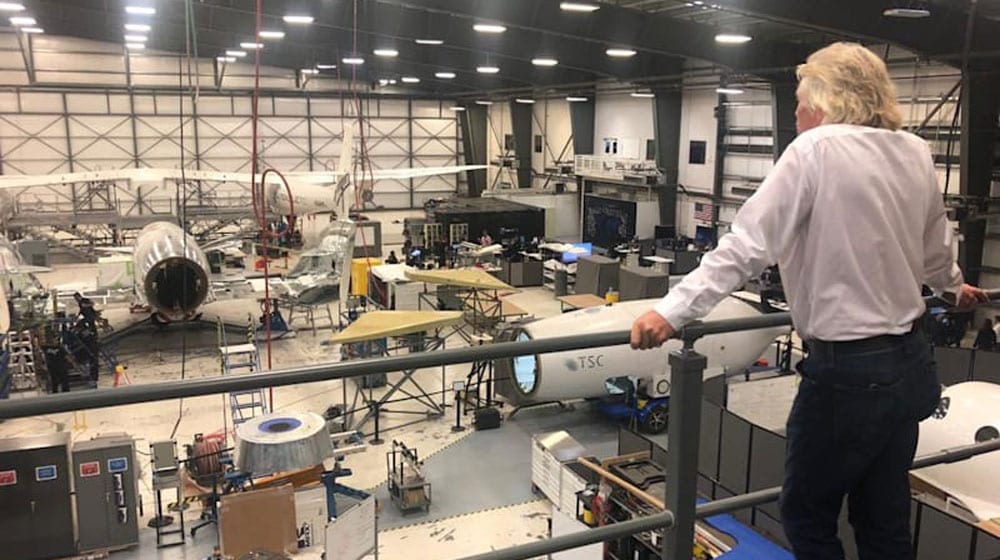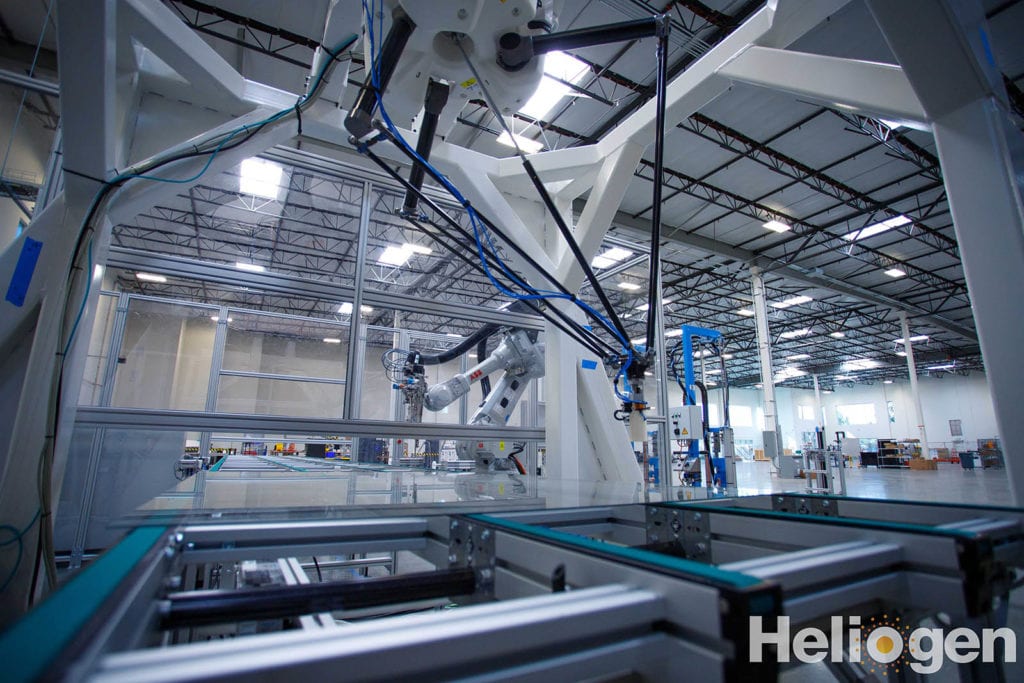MOSER ON MANUFACTURING

Virgin Galactic is building a new factory in Mesa, AZ, to assemble its next-generation Delta class spaceships. Photo courtesy Virgin Galactic
Assembly lines have been around for more than a century, but new technologies, processes, investments and strategies are accelerating production, increasing capacity and driving revenue growth.
Here are some exciting new assembly projects that are out of this world.
Virgin Galactic, an airline and space travel company, is building a new assembly facility in Mesa, AZ, for its next-generation Delta class spaceships. The plant will be able to produce up to six spaceships per year, which will be transported by Virgin Galactic motherships to Spaceport America, NM, for flight test and commercial operation.
“Our spaceship final assembly factory is key to accelerating the production of our Delta fleet, enabling a rapid increase in flight capacity that will drive our revenue growth,” says Michael Colglazier, CEO of Virgin Galactic.
In September, Northrop Grumman opened its Maryland Space Assembly and Test 2 facility at its Baltimore campus. “The new digitally integrated MSAT2 grows our advanced manufacturing, assembly and test capabilities as we continue to deliver end-to-end space solutions with speed and agility,” says Scott Lee, vice president and general manager for payload and ground systems at Northrop Grumman.
Pinnacle Aerospace LLC, a manufacturer of defense and aerospace products, is investing $14.7 million in a new facility in Wellington, KS, that will create 155 new jobs. The new operation will assemble complex hard-metal components for commercial, military and space applications.
New investments promise to maintain America's leadership in aerospace manufacturing.
Green Initiatives
Aerospace companies aren’t the only manufacturers investing in U.S. production. Other industries are boosting domestic capacity, as well, spurred by growing demand for green energy and transportation.
Heliogen, a concentrated solar power energy provider, will develop, assemble and test heliostats and other components at a new assembly plant in Long Beach, CA. Heliogen’s ICARUS system of AI-backed robots will autonomously deliver the heliostats from the plant to the field and install them with accuracy of ±2 centimeters.
Automakers are accelerating investment in electric vehicle and battery cell manufacturing as the industry looks to expand the domestic supply chain. Investments planned for lithium-ion battery factories now exceed $40 billion, creating a “gigafactory boom,” according to Michael D. Plante, senior research economist and advisor at the Federal Reserve Bank of Dallas.
In 2022, automakers announced investments of $13 billion in U.S. EV manufacturing (three times what the industry spent in 2020) and $24 billion in batteries (28 times more than the industry invested in 2020). The Alliance for Automotive Innovation reports that domestic battery manufacturing capacity could increase by 333 percent from 2020 to 2025.
General Motors’ Factory Zero, formerly known as Detroit-Hamtramck, reopened in 2021 following a $2.2 billion investment to shift to EV production. Factory Zero is GM’s first fully dedicated EV assembly plant and in 2022 it also began to assemble Ultium battery cells. The facility employs 710 workers.
Ford Motor Co. announced it will invest $3.7 billion in assembly plants in Michigan, Ohio and Missouri and create 6,200 jobs. The investment will increase output for both EVs and traditional gas-powered autos.
Honda and battery maker LG Energy Solution will spend $4.4 billion to build a battery assembly plant in the U.S. “Aligned with our long-standing commitment to build products close to the customer, Honda is committed to the local procurement of EV batteries, which is a critical component of EVs,” says Honda CEO Toshihiro Mibe.
Sunlight Batteries USA is investing $40 million in a new plant in Greensboro, NC. They will use robot-assisted systems to assemble lithium-ion batteries.

Heliogen will develop, assemble and test heliostats and other components at a new assembly plant in Long Beach, CA.
Photo courtesy Heliogen
Intelligent Automation
Automation is a common thread in all these projects. Automation increases quality and productivity, enabling manufacturers to produce more with less. Many complex assemblies that could previously only be done by hand can now be achieved with intelligent automation, such as robotics, artificial intelligence and machine learning.
However, successful automation projects don’t happen by accident. Engineers must “think more strategically—take a more balanced approach—to designing not just products. but also the overall manufacturing ecosystem—factories, equipment and people—that needs to support it,” says Caroline Pan, chief marketing officer at Bright Machines, an automation technology supplier.
Companies that are considering automation to reduce costs for reshoring should consider reskilling and up-skilling their workforce.
Are you considering reshoring? When new processes, technologies and strategies are factored into a reshoring project, companies can become more resilient and reduce or even eliminate the offshore cost gap. For help, call 847-867-1144 or email harry.moser@reshorenow.org.


